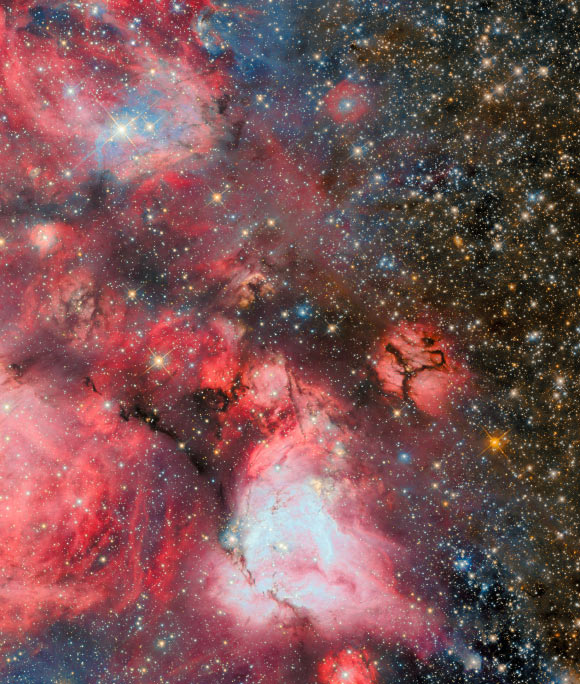Astronomers using the NASA/ESA Hubble Space Telescope have released a beautiful new image of part of N159, a massive star-forming cloud located about 160,000 light-years away in the constellation of Dorado.
N159 is one of the most massive giant molecular clouds in the Large Magellanic Cloud, a companion to our own Milky Way Galaxy.
Located at the southwest tip of the famous Tarantula Nebula, the cloud is over 150 light-years across.
It is composed of at least four H II regions separated from one another by 33-65 light-years.
Torrential stellar winds from hot newborn massive stars within N159 sculpt ridges, arcs, and filaments.
Previous studies of N159’s gas content revealed the complex chemistry and physical conditions under which star formation takes place.
“N159 is one of the most massive star-forming clouds in the Large Magellanic Cloud, a dwarf galaxy that is the largest of the small galaxies that orbit the Milky Way,” the Hubble astronomers said in a statement,
“The new Hubble image shows just a portion of the N159 star-forming complex.”
“The entire complex stretches over 150 light-years across,” they noted.
“To put that into perspective, 150 light-years is nearly 10 million times the distance between Earth and the Sun.”
“In the subzero interior of this gas cloud, subjected to the crushing pressure of gravity, young stars begin to gleam in the darkness.”
“Particularly hot and high-mass stars illuminate their birthplaces with red light.”
“This red glow is characteristic of excited hydrogen atoms.”








